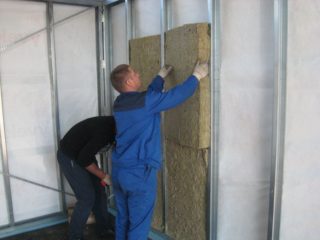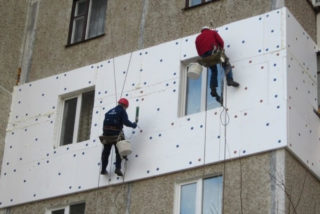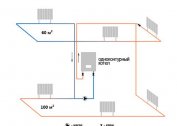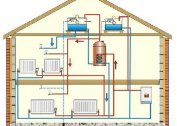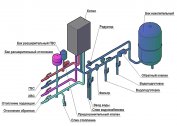With the onset of cold weather we do not want to leave the house once again, and we hurry home from the street as soon as possible. But not always our hearth pleases with warmth, and sometimes upsets with dampness. There is a way out of this situation, like any other. It is quite expensive at first glance, but believe me, it's worth it. Indeed, for one cold period, you will save a significant amount on heating the house and save your repairs from damage by fungus and mold. So, we will familiarize ourselves in more detail with the insulation options and the materials used for this.
Wall insulation
If it is a private house or apartment, especially if it is angular, then a lot of heat loss goes through the outer walls. They can be insulated both externally and internally.
The internal method is not as rational as the external.
With internal insulation:
- the area of the room is reduced;
- all construction and installation works are carried out inside, which entails dirt, dust and additional repair costs;
- due to the fact that the outer wall remains cold, and the insulation will be warm due to heating from the inside, condensation may accumulate between them. This method is unlikely to save from dampness in the room.
With external insulation:
- all work is carried out outside;
- walls after warming even in severe frosts warm;
- external insulation protects them from the effects of weather conditions;
- serves as additional sound insulation;
- prevents mold and mildew from the inside of the walls.
After choosing a method of wall insulation, it is worth thinking about the material itself.
Mineral wool and glass wool are fibrous insulation in composition. Glass wool has a higher thermal conductivity due to the fact that it has the fibers of which it is much thinner than mineral. Therefore, glass wool retains much more warm air.
The advantage of this material can be considered:
- resistance to temperature extremes;
- fire resistance;
- does not give in to chemical destruction;
- the material can breathe.
The only downside is that the material is unstable to moisture, which requires additional costs for the external protective coating.
Cellular insulation - polystyrene foam, known to most as polystyrene foam, has excellent thermal insulation, is quite durable and practically does not absorb moisture. Relatively inexpensive material, both in price and in installation, quite light in weight.
Styrofoam has no less minuses than pluses:
- combustible;
- susceptible to destruction by chemical exposure;
- the slightest moisture that has got inside the material can easily freeze.
An more expensive analog of polystyrene foam is extruded polystyrene foam. It does not have such disadvantages as ordinary polystyrene foam, which significantly affects its cost.
Floor insulation
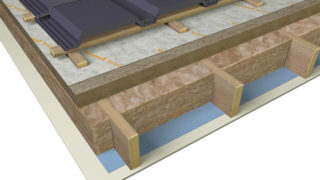 If there is a question about floor insulation in a private house that does not have a basement, then you can solve it:
If there is a question about floor insulation in a private house that does not have a basement, then you can solve it:
- On the first floor, remove the old floors and alternately lay a layer of rubble, then sand. Tamp everything well and lay insulation material on top of everything.
- To insulate the floor, under which other rooms are located, you can immediately lay the insulation material. It is possible to organize a "warm floor" (for more significant rooms).
If warming the floor, you will do the same with the ceiling of the room located under it, this will make it warmer. In this case, it will be possible to abandon the rather expensive electric “warm floor”.
Cork insulation is the most suitable material for the floor.
Advantages:
- excellent noise insulation properties;
- resistant to rot and damage by fungus.
One significant drawback is that it is a very expensive material. Because of what it can not be applied everywhere.
Extruded polystyrene foam is very suitable for the floor due to the presence of a layer of foil in it. The material itself is a roll type. It is also used as the basis for the installation of an electric "warm floor".
Ceiling insulation
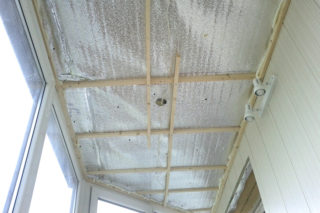 For insulation of the ceiling, it is worth choosing a refractory material. In private residential buildings, the ceiling should be insulated both from above and from below, i.e. ceiling and floor of the upper floor. If an attic is located above the insulated ceiling, then it is worthwhile to carry out insulation work in it. This will give greater efficiency for maintaining heat.
For insulation of the ceiling, it is worth choosing a refractory material. In private residential buildings, the ceiling should be insulated both from above and from below, i.e. ceiling and floor of the upper floor. If an attic is located above the insulated ceiling, then it is worthwhile to carry out insulation work in it. This will give greater efficiency for maintaining heat.
As the ceiling insulation, you can use mineral wool and polystyrene.
You can also choose foil polyethylene. Outwardly, it looks like foamed polyethylene with a layer of foil. Fairly light and not very thick material. But this does not prevent him from coping well with his appointment due to the foil layer. After all, as you know, the foil has reflective properties, thereby keeping heat indoors. This material can be used in combination with other heat-insulating materials to increase their effectiveness.
Having familiarized yourself with the above materials, you can make your home warm and dry.
